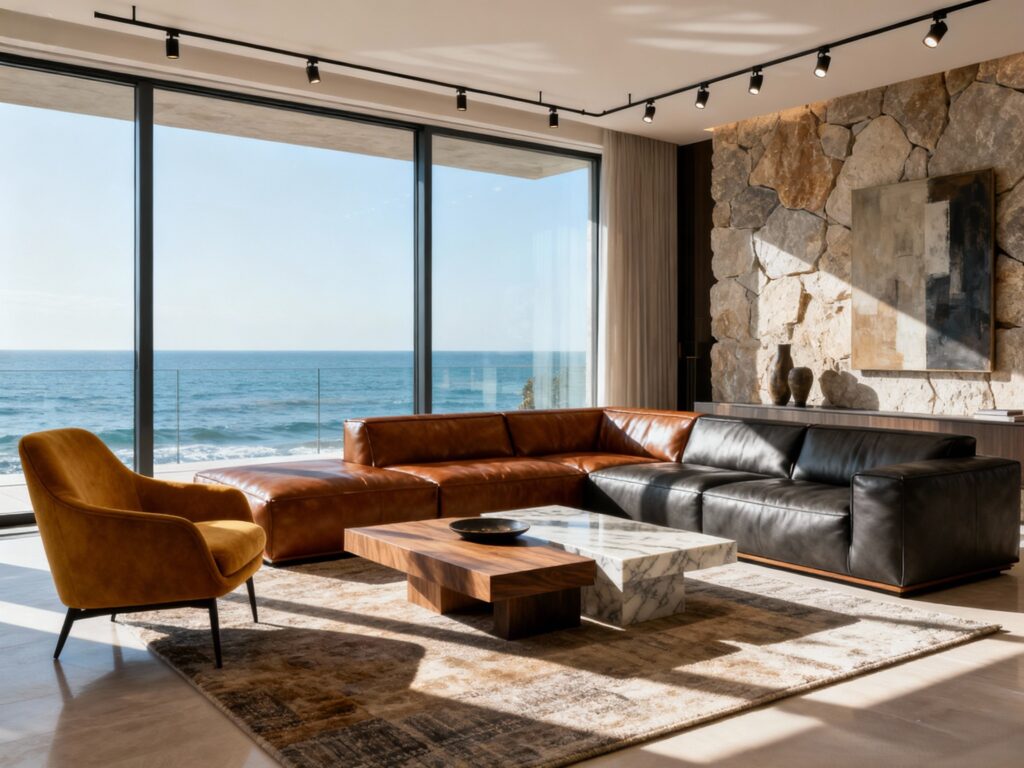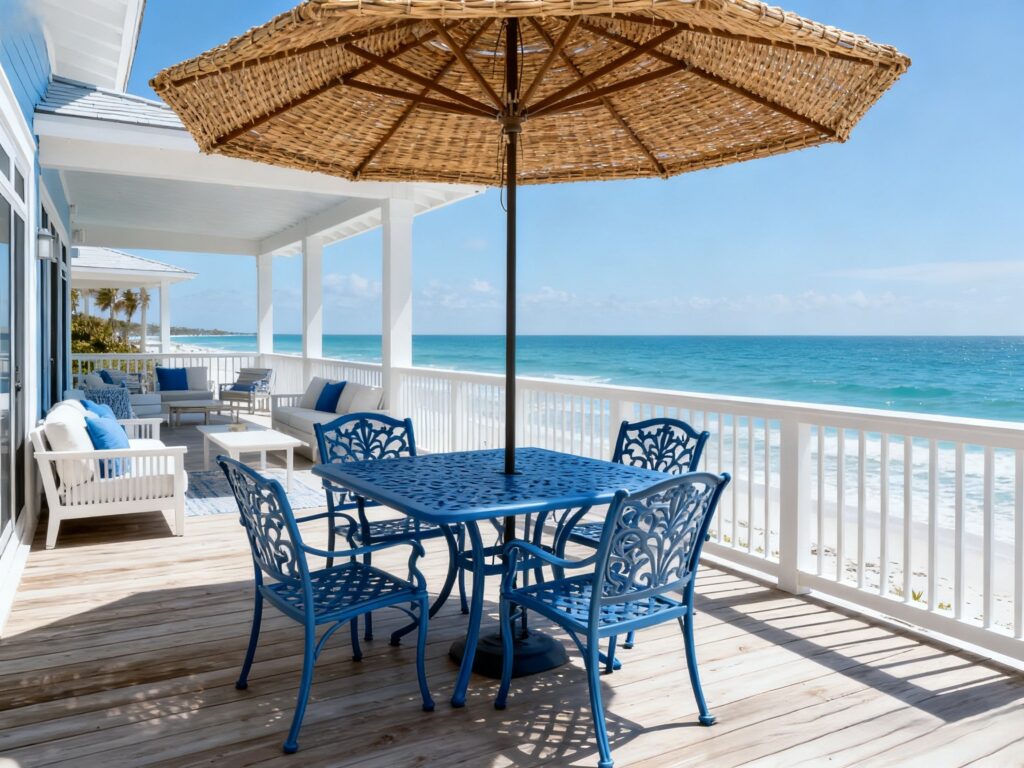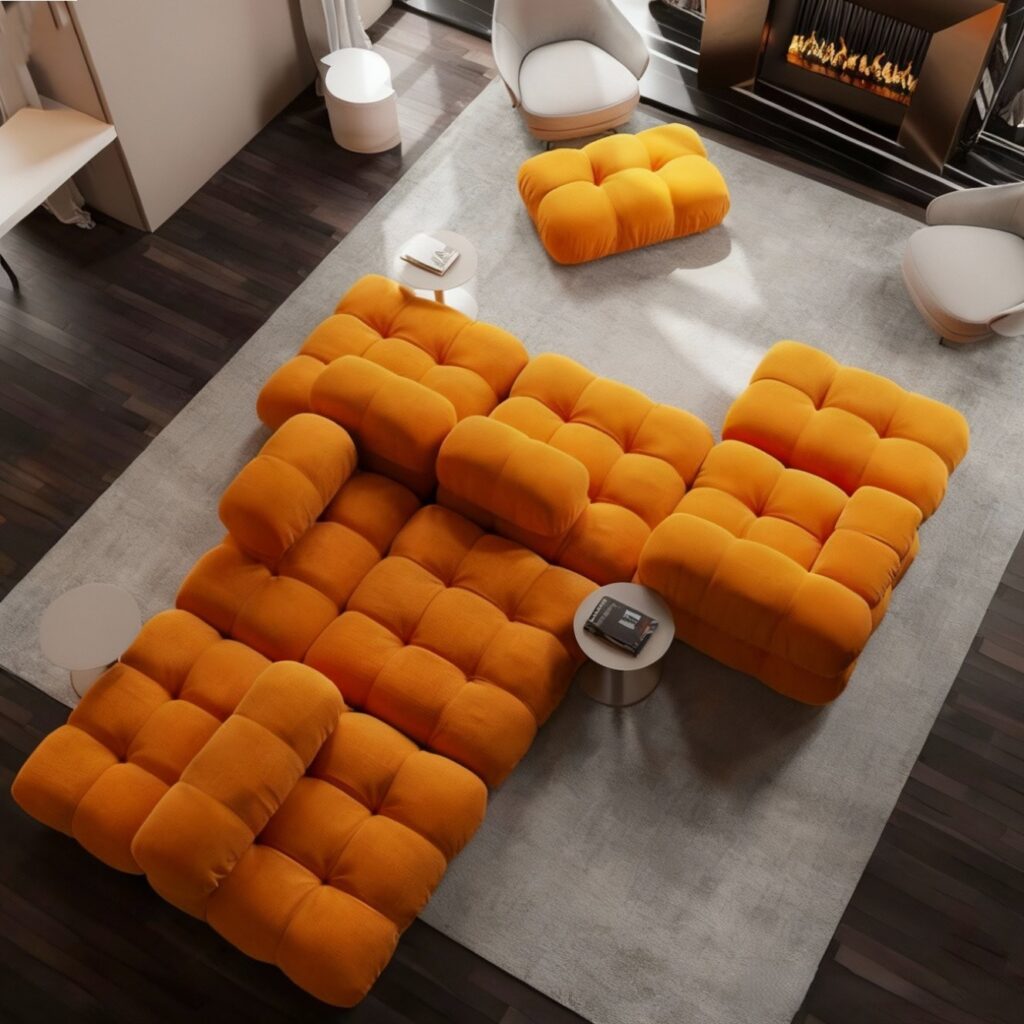The Leather Sofa Buyer's Checklist
5 Steps to Guaranteed Quality
- lasie
- 2025-10-21

Introduction :The Value and Challenge of a Leather Sofa
Choosing a leather sofa is more than just selecting a piece of furniture; it is making a long-term investment in your home’s comfort and style. A high-quality leather couch is a timeless masterpiece, known for its classic elegance, luxurious feel, and exceptional durability. Unlike fabric upholstery, genuine leather develops a unique character—a rich, sophisticated gloss known as Patina—as it ages, making it truly one-of-a-kind.
However, the market is saturated with options, making the selection process challenging. Prices vary dramatically, and it’s difficult for the average consumer to distinguish between authentic, premium leather and lower-quality substitutes like bonded leather or poorly processed splits. This article is your comprehensive Leather Sofa Buying Guide. Our goal is to provide a professional framework for comprehensively evaluating a leather sofa’s quality, ensuring you choose a piece built to last for generations.

part 1:The Soul of Leather—Identifying Premium Hides
The longevity of your sofa begins and ends with the leather itself. Understanding the hierarchy of hide quality and processing techniques is essential for making an informed decision.
I. The Hierarchy of Hides: Comparing Leather Grades
Full Grain Leather
Full Grain Leather is the gold standard in the leather industry. It is the topmost layer of the hide, retaining all the natural grain and inherent imperfections—like scars or stretch marks—which certify its authenticity. This leather is exceptionally breathable, boasts the highest tensile strength, and offers unmatched durability. It ages beautifully, developing the sought-after Patina rather than wearing out. For those who seek the highest quality and desire a natural aging effect, Full Grain Leather is the ultimate choice for your luxury leather sofa.
Top Grain Leather
Top Grain Leather is the second-highest quality leather. It is taken from the top layer of the hide but has been lightly sanded or buffed to remove minor surface imperfections. This process results in a smoother, more uniform appearance and a softer hand feel, making it the dominant choice for most high-quality furniture on the market. While slightly less breathable than full-grain, Top Grain Leather still offers excellent resilience and is considered a high-quality, reliable option for an everlasting leather sofa.
Correcting Misconceptions: Split Leather and Bonded Leather
It is crucial to understand the difference between high-quality Top Grain Leather and lesser options. Split Leather (or Suede) comes from the lower layers of the hide and lacks the natural strength and durability of the top layers. Even worse, Bonded Leather (or Reconstituted Leather) is often made from pulverized leather scraps bonded with polyurethane, offering none of the natural qualities or longevity of genuine leather. Ensure your investment is truly in genuine, quality Leather sofa.
II. Focusing on Process: From Aniline to Pigmented
The dyeing and finishing process dramatically affects the leather’s feel, appearance, and resistance to wear.
1. Aniline and Semi-Aniline Leather
Aniline Leather uses a transparent dye that allows the natural surface characteristics to remain fully visible. It has little to no protective topcoat, resulting in the softest, most luxurious, and natural touch. This is the choice for the tactile purist, though it is more susceptible to stains and requires diligent Leather Sofa Care. Semi-Aniline Leather offers a slight protective coating, balancing the natural feel with improved stain resistance.
2. Pigmented Leather
This heavy-duty finish gives the leather a uniform color and provides the highest resistance to fading, scuffing, and stains. It sacrifices some of the natural softness but gains significant practical durability. This is the ideal choice for high-traffic areas or households with children and pets, prioritizing resilience over the ultimate natural feel.

III. On-Site Inspection Techniques: How to Assess Leather Quality
When physically inspecting a leather sofa, use these simple techniques to gauge quality:
- Look : Examine the pattern. High-quality hides will have subtle variations in the grain, pores, and fine wrinkles—perfect uniformity is a sign of heavily processed or synthetic material.
Touch : Run your hand over the surface. Premium leather should feel supple, warm, and rich, not slick, cold, or plastic-like.
Press : Gently press your finger into the cushion surface. Genuine leather should wrinkle slightly around the pressure point in a natural, organic way, and then quickly return to form.

part 2 :The Skeleton and Muscle—Frame and Cushioning
Recommended Materials
The frame provides the foundational stability. The gold standard is a frame constructed from kiln-dried Solid Wood Frame (such as kiln-dried birch, eucalyptus, or hard pine). Kiln-drying is a crucial standard: it removes moisture, preventing the wood from warping, cracking, or developing mold over time. Avoid frames made solely of particleboard or softwoods.
Inspection of Structure
The joints must be robustly constructed. Look for frames connected using traditional joinery methods like mortise-and-tenon, reinforced with strong screws, dowels, or corner blocks—not merely glued or stapled together. A properly constructed Sofa Frame Construction is the backbone of durability.
Durability Test
Attempt to gently rock or press on the armrests and sides of the sofa. A high-quality Solid Wood Frame should feel rigid, stable, and show no signs of flex or wobble.

II. Elastic Foundation: Spring and Webbing Systems
The seating platform must provide consistent, long-term support.
Preferred Springing
The best support systems utilize closely spaced Sinuous Springs (S-shaped springs) or individual pocket coil springs. Sinuous Springs run from the front of the seat to the back and provide excellent support without the bulk of traditional coiled springs.
Auxiliary Support
The springs are often supplemented by heavy-duty elastic webbing that ensures the seating cushion receives balanced tension and prevents premature sagging.
III. The Secret to Comfort: Cushioning Materials
The internal filling dictates both initial comfort and how well the sofa resists compression over time.
High Density Foam
For a truly long-lasting sofa, the cushion core must be high-density foam. Foam Density is the single most critical factor, measured in kg/m³. We recommend high-resilience foam with a density of $35kg/m³ or higher. Lower-density foams will feel soft initially but will compress and sag rapidly, compromising your investment.
Down/Feather Blends
For a luxurious, sink-in feeling, many luxury leather sofas incorporate a blend of down and feathers surrounding the foam core. While this adds a superior level of comfort and “enveloping” feel, be aware that down requires regular fluffing and patting to maintain its loft and shape.
Part 3 : Visible Quality—Craftsmanship and Design
Beyond the hidden components, meticulous attention to visible details separates a standard sofa from a masterpiece of upholstery.
Stitching and Sewing
Examine the stitching closely. The lines should be perfectly straight, uniform, and tight, with no loose threads or missed stitches. Critical stress points—like where the arm meets the back or the edges of the seat cushions—should use reinforced stitching, such as double-stitching or multi-ply threads, to prevent tearing over decades of use. This attention to detail defines true Upholstery Craftsmanship.
Color Uniformity and Symmetry
Inspect the entire sofa for consistent color and texture. For split or multiple-hide patterns, the leather panels should be carefully matched for grain and tone. High-quality production ensures that patterned panels are symmetrical, showcasing premium material handling.
Backrest and Armrest Ergonomics
Evaluate the design from an ergonomic perspective. Are the armrests at a comfortable height to support your forearms? Does the backrest height and angle provide adequate lumbar and neck support? Good design balances aesthetic appeal with functional support for long periods of sitting.
Base and Support Legs
Check the stability of the support legs. Whether they are polished metal, Solid Wood Frame legs, or discreet recessed feet, they must be securely attached. Additionally, check for protective pads (like felt or rubber) on the base of the legs to safeguard your flooring.
Part 4 : Ensuring Eternal Luxury—Proper Daily Care
Even the highest quality long-lasting sofa requires appropriate care to fulfill its potential. Proper Leather Sofa Care is the final step in ensuring your investment truly lasts.
Environmental Control
Avoid Direct Sunlight and direct heat sources (like radiators). Prolonged exposure to sunlight can cause the leather to fade, dry out, and eventually crack. Maintaining a stable, moderate indoor humidity level is crucial; leather is an organic material that needs to “breathe” and retain natural moisture.
Routine Cleaning
Regularly dust the sofa using a clean, soft cloth or the brush attachment of your vacuum cleaner. This prevents abrasive dust particles from settling into the pores and causing premature wear.
Periodic Maintenance
Apply professional-grade Leather Conditioner or Leather Cleaner $1-2$ times per year. This replenishes the natural oils in the leather, preventing it from drying out and maintaining its supple feel and the beautiful Patina.
Handling Spills
Immediately blot spills (oil, water, pen marks) with a clean, dry cloth. Never rub the stain, as this can force it deeper into the material. Use specialized cleaning agents designed for leather for spot treatment.
Conclusion: Your Everlasting Investment
When choosing a leather sofa, remember the core principle: the inner structure is far more critical than the outer appearance. Premium Top Grain Leather or Full Grain Leather, combined with a robust Solid Wood Frame and high-density cushioning, forms the foundation of an everlasting piece. By focusing on these professional indicators and committing to proper Leather Sofa Care, you ensure that your investment in a luxury leather sofa is one that will reward your family with comfort and style for decades.

you may also like
Cast Aluminum: The Ultimate ROI Investment for Luxury Resorts, Villas, and Hotels
Cast Aluminum: The Ultimate ROI Investment for Luxury Resorts, Villas, and Hotels Table of Contents 1.Shifting the Focus from Initial Cost to Long-Term Value The global hospitality market—especially the luxury sector of resorts, private villas, and high-end hotels—operates under intense pressure to maintain pristine aesthetics while handling non-stop, high-traffic usage. When sourcing outdoor furniture, procurement […]
Modern Minimalist Meets Leather: 5 Design Rules to Avoid the “Old-School” Look
Modern Minimalist Meets Leather: 5 Design Rules to Avoid the “Old-School” Look Table of Contents Introduction: Why Leather Sofas Are Misunderstood Leather sofas have long been a symbol of luxury, comfort, and craftsmanship. However, for many homeowners, they’re often associated with a traditional or even “old-fashioned” look — heavy, dark, and formal. In today’s modern […]


